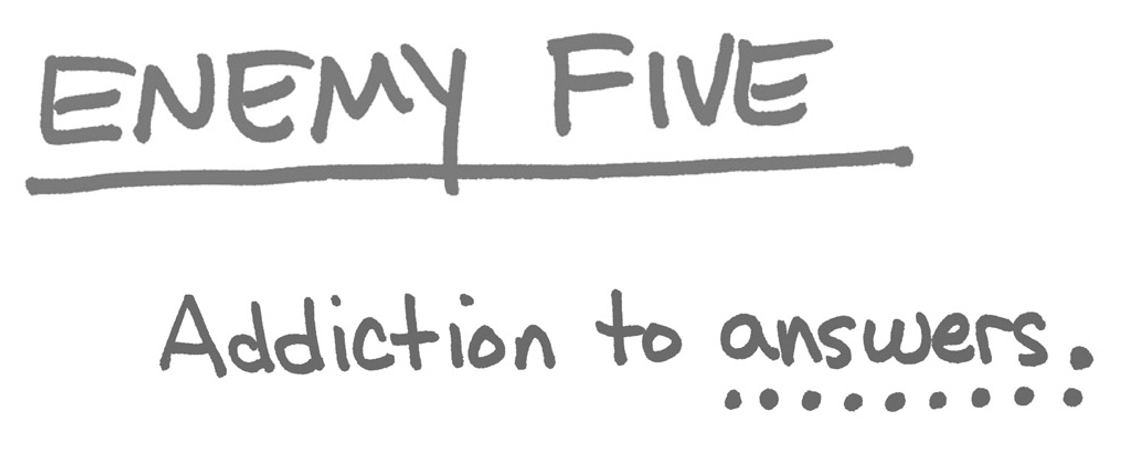Westside Toastmasters is located in Los Angeles and Santa Monica, California - Westside Toastmasters on Meetup
Exercise
Take A Break!
Set the book down. Your crucial assignment is to . . .
Draw a picture.
Go for a walk for 15 minutes.
Do some stretches.
Listen to some music you enjoy.
See what new ideas pop into your consciousness while you're gone. Write them down and share them with your team.
Most businesspeople know lots of answers. We all got good scores on our SATs. We knew the answer to 'where do you want to be in five years?' when we were interviewing for jobs. We know the latest P&L projections. The problem is that needing to always know the answers doesn't allow us to wonder about the questions.
Think about the standard interview questions for a moment. Chances are you've been on one or both sides of this interaction. Have you ever wondered, why are these the questions? Has anyone ever given a fresh, inspired, unrehearsed answer to the question, 'Where do you want to be in five years?'
This addiction to answers is a natural response to the way we're taught. You come into a situation (a classroom) in which the same process happens day in and day out: You are presented with a question, and you are expected to produce the answer, an answer that someone else already knows (in fact, chances are it's an answer that everyone else in the class also knows). The answer is on the teacher's copy of the test or hiding in the back of the book. Your entire scholastic career is built up of numbers-percentages that reflect how many questions you answered correctly.
Linear thinking and problem solving are good skills to have, but they sometimes act as blinders. We obediently search for answers to the questions, but it doesn't occur to us to wonder about the larger picture. When you're asked in second grade about how many apples Johnny has if he starts with five and gives two away, all you are expected to say is, 'Three.' You aren't asked to think about who Johnny is, why he has so many apples, whom he's giving them to, or why this simple math question is framed as a story about an imaginary kid with pretend apples.
You can see a pattern developing with all the enemies of innovation: relying on unthreatening logic, accepting boundaries without question, not wanting to risk challenging the status quo. Everything leads to the celebration of the obvious and the dull.
We have to shake ourselves loose from the deep inner conviction that, somewhere, there is a Big Book of Answers that holds the solution to every problem. If this resource were a book of answers, there would simply be a list of case studies with their corresponding solutions-but all that does is deliver the end result without examining the process that brought the result about. There is no flipping to the back of the book here to find the answers. Instead, there is a continuing process of reconditioning yourself to think about situations in a new and broader way.
I have asked a client to hypothetically create a board game that represented and operated by the rules that governed the way their business currently worked. Then we went in and methodically helped the client create a whole new go-to-market strategy for a new brand. The 'rule' of the focus-group facility business is that you interview consumers in sterile environments, so that you do not influence them in any way. What we have found was that sterile environments yielded sterile responses. Consequently we have come to understand that if you wish a better chance of generating creative ideas in a professional context put people in a more natural, comfortable environment so they feel relaxed, welcomed, and at home. Not surprisingly, people are more innovative and forthcoming when that's the way they feel.
Chasing the answer doesn't allow us to pretend or imagine or to be in awe. Think about the situation at hand in broader terms than 'problem/solution.' Before you hunt answers, look for all the questions.




